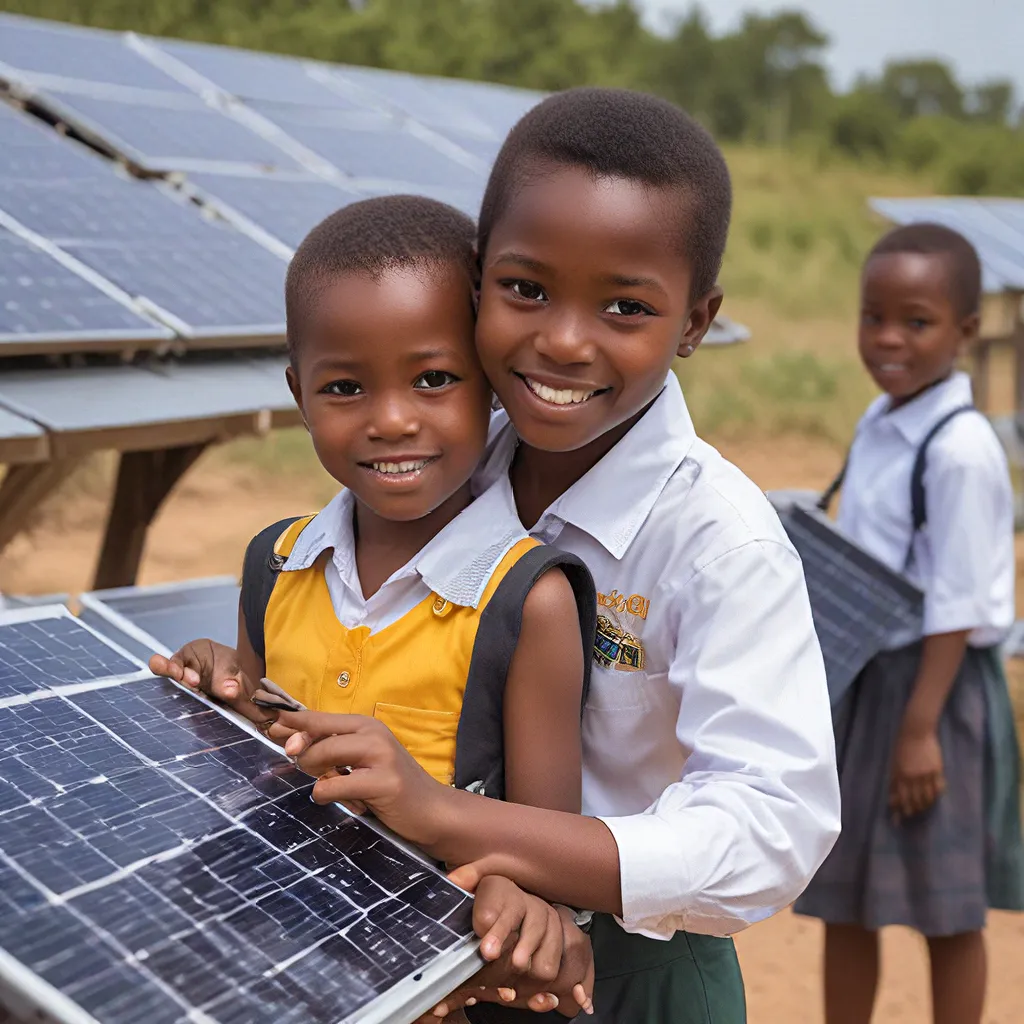
Illuminating the Path to a Brighter Tomorrow
Picture this: A remote village in Africa, where the only light at night comes from the glow of the moon and the flickering flames of kerosene lamps. Now, imagine that same village, its streets and homes bathed in the warm, steady glow of solar-powered lights. This is the transformative power of renewable energy, and it’s not just changing lives – it’s changing the future of education around the world.
As I delve into this topic, I can’t help but be struck by the sheer potential of solar energy to revolutionize the way we approach global learning. It’s a story of innovation, empowerment, and the relentless pursuit of a brighter tomorrow. Join me as we explore the bright futures that solar-powered education is creating, one community at a time.
Powering Up the Classroom
Let’s start with the basics – what does solar-powered education even mean? In essence, it’s the integration of solar energy technology into educational settings, from primary schools to universities. This can take many forms, from solar-powered computer labs to entire campuses running on renewable energy.
But the impact goes far beyond just providing electricity. The World Bank estimates that the COVID-19 pandemic has led to a staggering 70% of 10-year-olds in low- and middle-income countries being unable to read and understand a simple text. This “learning poverty” crisis has devastating consequences, not just for individual students, but for the future of entire communities.
This is where solar energy steps in as a game-changer. By providing reliable, affordable, and sustainable power, solar-powered classrooms can stay open longer, offer more enriching learning experiences, and ultimately, help bridge the global learning gap.
Illuminating Opportunity
Imagine a student in a remote village, her family struggling to make ends meet. Without access to electricity, her educational opportunities are limited. But with the introduction of solar-powered schools, her world opens up. She can now study after the sun goes down, access digital learning resources, and even explore STEM subjects that were once out of reach.
This is not just a hypothetical scenario – it’s a reality that’s being realized across the globe. In Colorado, for example, Solar Energy International (SEI) is offering scholarships to high school graduates to enroll in solar energy courses, paving the way for a new generation of renewable energy professionals. These students aren’t just learning about solar power – they’re gaining the skills and certifications to become leaders in the field, driving the transition to a sustainable future.
But the impact of solar-powered education extends far beyond individual lives. As more communities embrace renewable energy in their schools, the ripple effects can be seen in improved academic performance, increased enrollment, and even higher rates of economic development. It’s a virtuous cycle that has the potential to transform entire regions.
Shedding Light on Global Challenges
Of course, the journey towards solar-powered education is not without its challenges. As Stanford professor Stefan Reichelstein explains, the cost-competitiveness of solar power is still a work in progress, with subsidies and technological advancements playing a crucial role. And the logistics of implementing solar systems in remote or underfunded areas can be daunting.
But the potential benefits far outweigh the obstacles. By investing in solar-powered education, we’re not just addressing the immediate needs of students – we’re shaping the future of entire communities. Imagine a world where every child, regardless of their geographic or economic circumstances, has access to the resources and opportunities they need to thrive.
This isn’t just a dream – it’s a vision that’s being realized, one solar panel at a time. From Africa to Asia, from Latin America to the remote corners of the United States, solar-powered education is proving to be a transformative force, lighting the way to a brighter, more equitable future.
Igniting a Brighter Future
As I reflect on the power of solar-powered education, I can’t help but feel a sense of excitement and hope. This is more than just a technological innovation – it’s a catalyst for social and economic change. By empowering students with the tools and resources they need to succeed, we’re not just improving individual lives, but creating a ripple effect that can reshape entire communities.
So, where do we go from here? The path forward is clear: we must continue to invest in solar-powered education, supporting initiatives that bring renewable energy to the classroom and equipping the next generation of leaders with the skills they need to thrive. It’s a daunting task, to be sure, but one that’s necessary if we want to create a world where every child has the opportunity to reach their full potential.
The future is bright, my friends. All we have to do is harness the power of the sun.